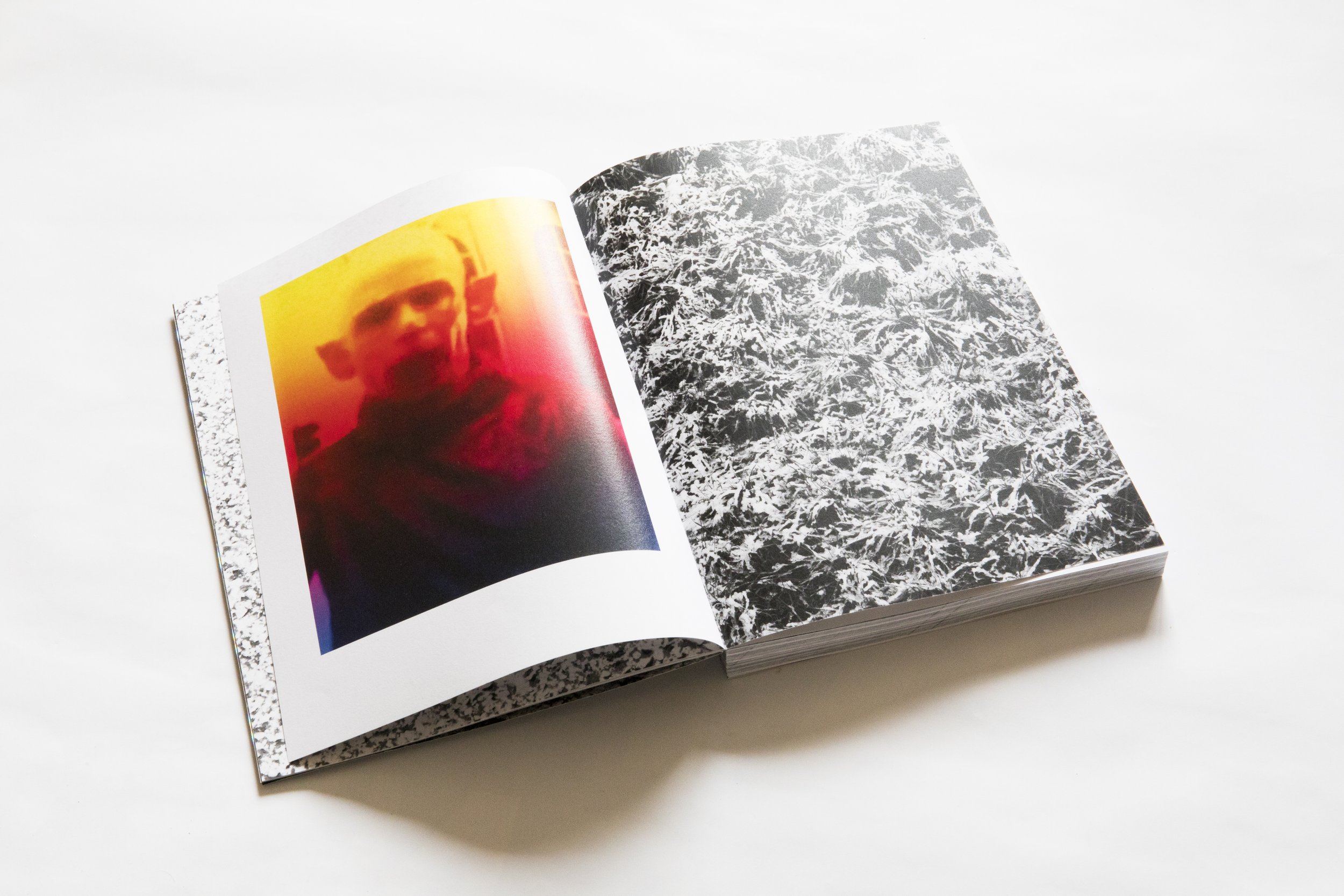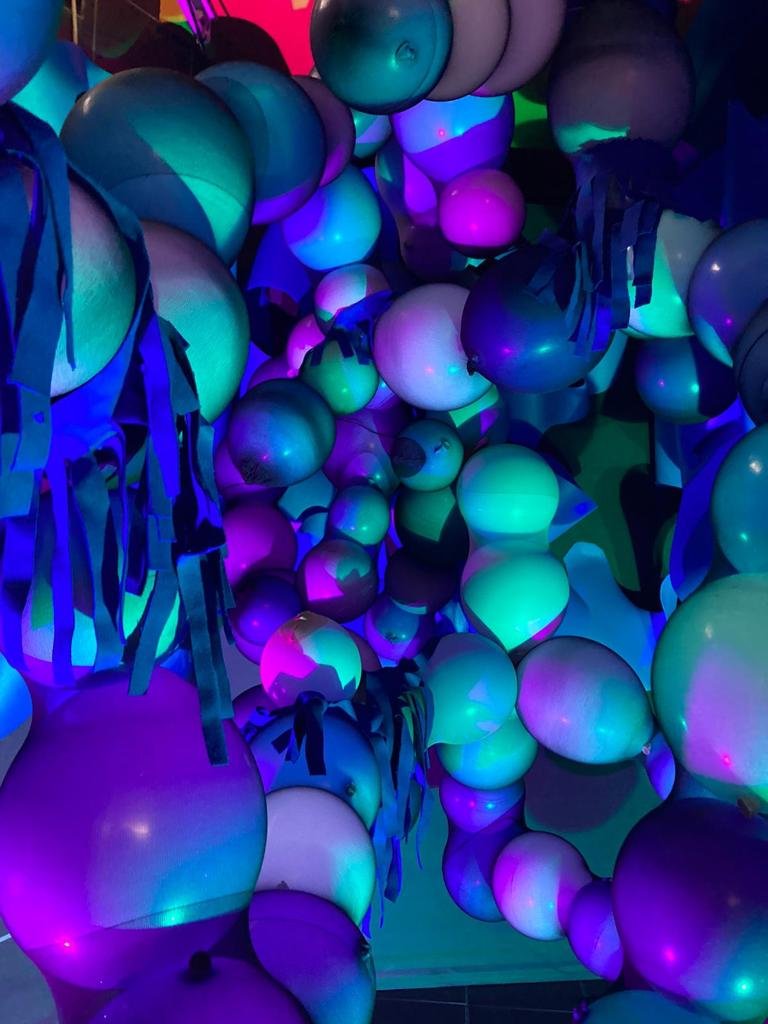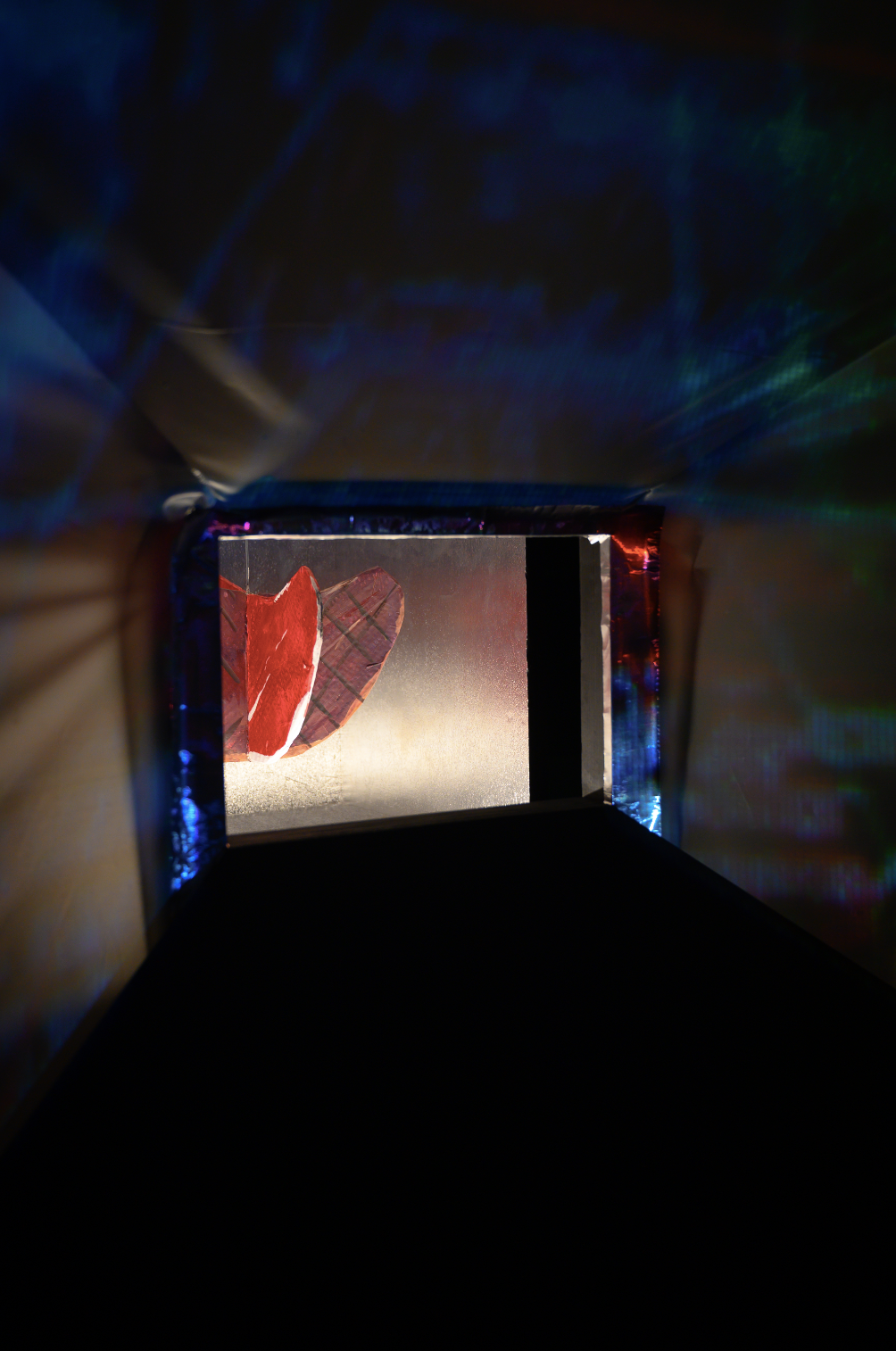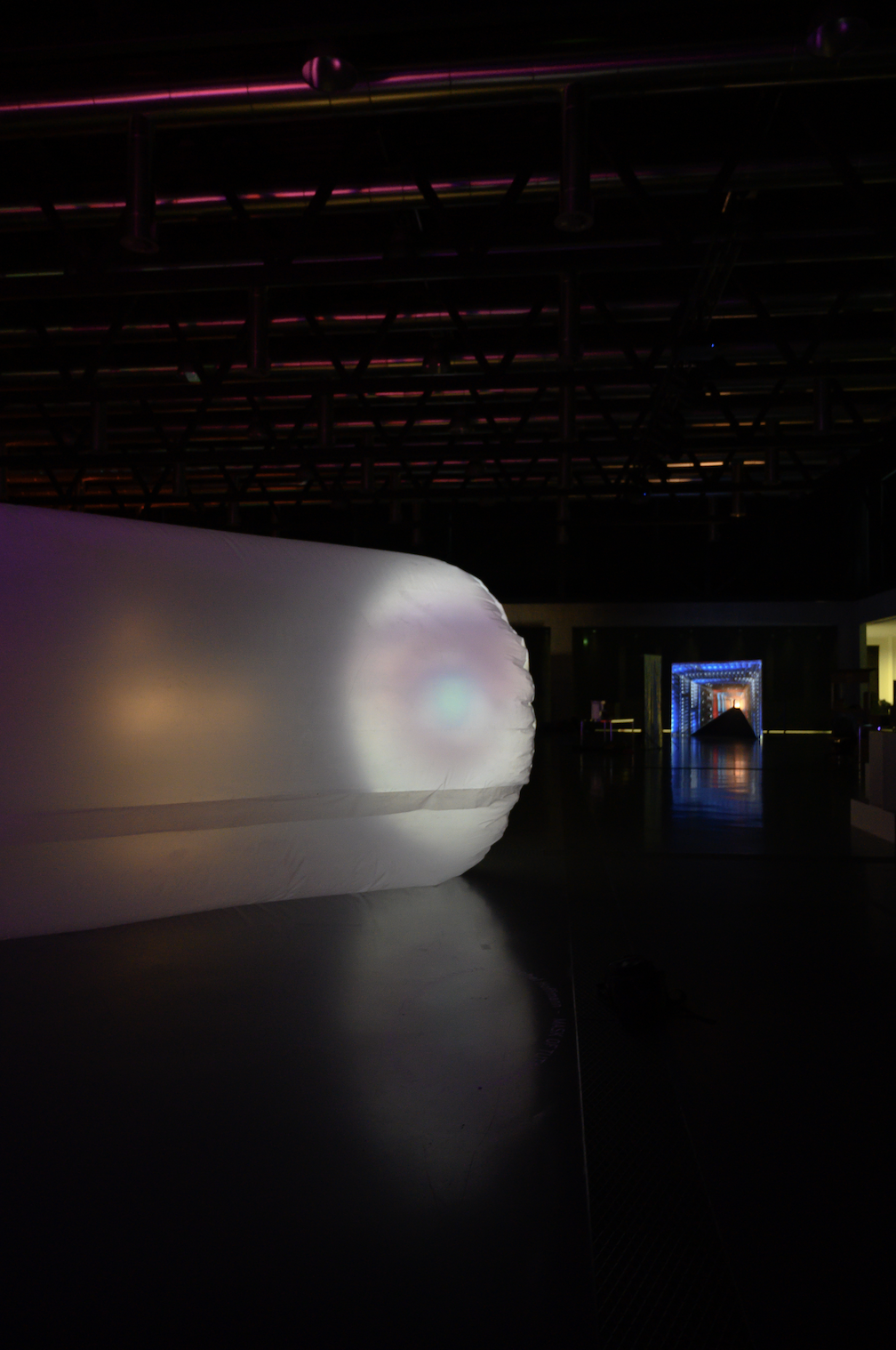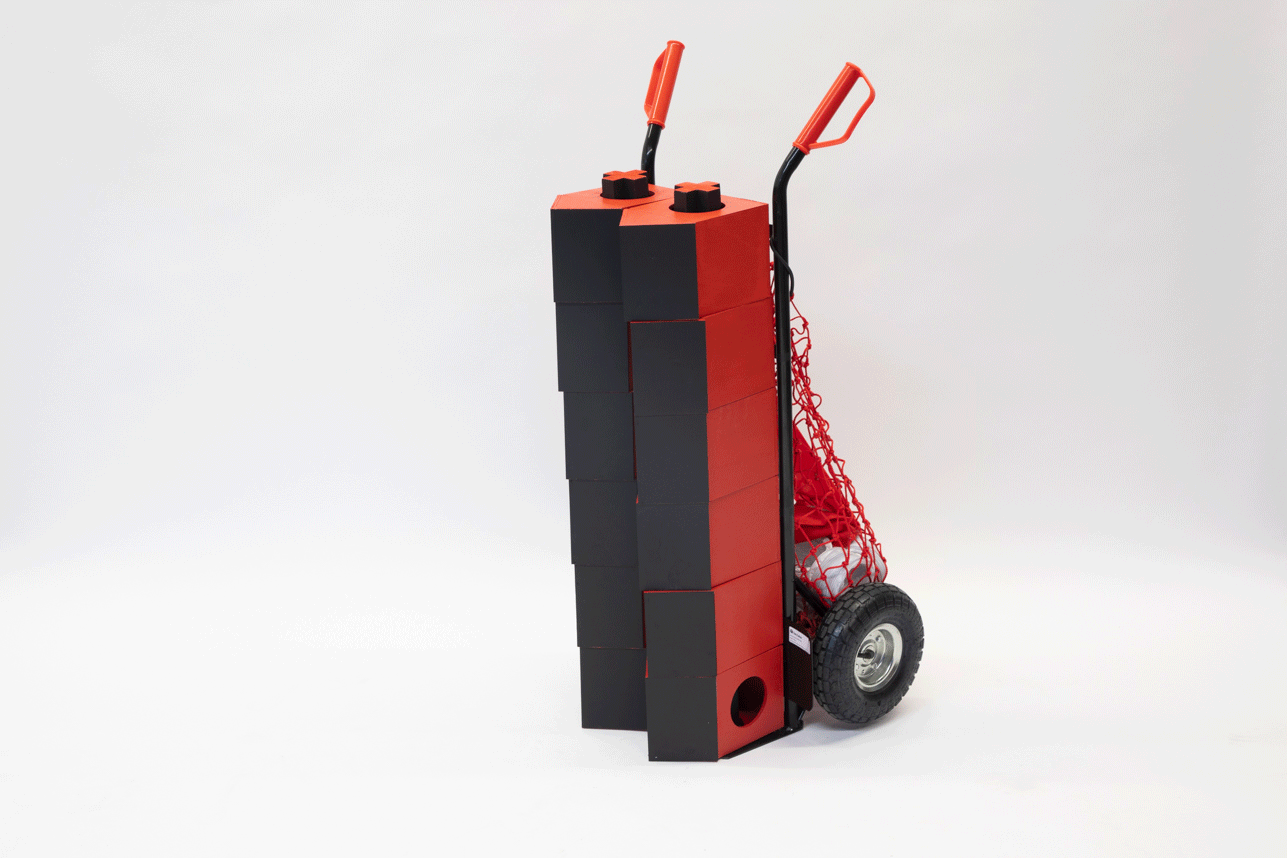2021
Team:
Rosario Hurtado, Arno Mathies, Alexandra Midal, Ruedi Baur, Dominic Robson, Emma Pflieger, Margaux Janin
Collaborators:
Irma Arribas, Monica Bello, Samy Bouard-Cart, Alexandre Burdin, Jeremie Cerman, Eléonore Challine, Matali Crasset, François Dumas, Fatoumata Dravé, El Ultimo Grito, Rita Hajj, Tristan Kobler, Olivier Lebrun, Ulrich Lehmann, Oscar Lhermitte, Malak Mebkhout, Metahaven, Jessica-Maria Nassif, Frederic Panni, Joseph Popper, Sébastien Quequet, David Roux Fouillet, Jana Scholze, Noam Toran, Yarza Twins, Pierre Vonnet, Erich Weiss, Nick Williamson, Daniel Zamarbide, Mathias Zieba
M2 Student Team:
Tanguy Benoit, Noemi Castella, Thomas Cerato, Tejal Gala, Marijose Galván Alessandra Hoffman, Rachel Hoffmann, Etienne Kurzaj, Thomas Lopes, Tommy Poiré, Julia Pelichet
M1 Student Team:
Kseniia Aleksandrova, Noemie Clerc, Jeff Délez, Ivan Jean Lorenzo Descombes, Joanne Joho, Marilou Haber, Nessim Kaufmann, Seongmin Kim, Hsuan Lee, Antoine Méthivier, Kenny Polyzois, Théo Remlinger, Hyojeong Song, Lou Tivollier, Ellen Van Erps, Seohyun Wi, Martin Zambaz.
M2 THESIS
Director:
Alexandra Midal
Tutor Team:
Jérémie Cerman, Eleonore Challine, Joseph Popper and Sébastien Quequet
Jury President:
Damien Delille
M2 PRACTICE PROJECT
Directors:
Rosario Hurtado and Arno Mathies
Project Team:
Maarten Gielen, Malak Mebkhout, Dominic Robson, David Roux-Fouillet and Noam Toran
Internal Jury:
Alexia Matthieu, Rosario Hurtado
External Jury:
Florine Bonaventure, Salomé Guillemin
Jury President:
Teresa Cheung
Photography Credits:
Michel Giesbrecht, Raphaelle Mueller, Baptiste Coulon
THE DESIGN FILM FESTIVAL
11 September - 1 November 2020
An online festival showcasing films by designers, and films on design by filmmakers and artists.
The Design Film Festival is an online festival that showcases films by designers, and films on design by filmmakers and artists on a platform that is jointly hosted by the Design Museum and the Institut Français. Running from 11 September to 1 November, the festival features moving images that are conceived as designs: through concepts such as ideation, iteration and prototyping, or through modes of display and presentation.
At a time of unprecedented restrictions on travel and the near-exclusive reliance on digital networks, the festival presents new forms of engagement through moving image. The festival aims to show how new tendencies in design, filmmaking, visual communication, as well as education, are shaping our perception of moving image.
The Design Film Festival presents 21 films selected by an internationally renowned jury – matali crasset, Sumitra Upham, Basel Abbas and Ruanne Abou Rahme – from the 175 submissions received in our Open Call. The final selection celebrates the diversity of film applications in design practice. In addition to the digital screening programmes, an exhibition titled Montage: Design and Film, Film and Design captures visual experiments in filmmaking that explore the margins and intersections between film theory and design practice by Masters students from Kingston School of Art, HEAD-Genève and Parsons The New School.
The Design Film Festival will also present an events programme featuring internationally renowned curators, educators, designers, artists, academics, filmmakers and sound artists. The programme will include contributions from sound designer Yuri Suzuki, former Design Museum director Deyan Sudjic, award winning designer and filmmaker Marloes ten Bhömer and multi-disciplinary artist Inês Neto dos Santos, to name just a few. The festival’s events programme offers a myriad of expert perspectives on the rich relationship between design and film.
Partners
Kingston School of Art is one of the best art and design schools in the world, as shown in subject rankings, research performance, industry and student awards.
Parsons School of Design enables students to develop the knowledge and skills they need to succeed in a rapidly changing society.
HEAD – Genève. Renowned for the quality of its bachelor's and master's degrees in Fine Arts, Cinema, Interior Architecture, Space and Communication, Visual Communication as well as Fashion and Accessory Design, HEAD – Genève has established itself as one of the leading schools of art and design in Europe.
Institut Français Royaume Unit. Part of a worldwide network, the Institut français in London encourages cross- cultural exchange and presents the best of French culture.
UNDER PERFORM
Workshop with Steven Ounanian and Rita Hajj
Using performance techniques to look into how technology mediates both our individual lives and the group (digital or otherwise).
Choosing 1 of 30 robots, cyborgs, search engines, or algorithms to research, understand, and expand upon over a week's workshop, hopefully creating new insights into our technological kin.
The workshop is split into three areas: Voice, Body, and Crowd. Ending with a live prototyping session where the week's experiments are share.
Brief:
Steven Ounanian
Tutor Team:
Rita Hajj
Assistants:
Margaux Janin
Emma Pflieger
M1 Student Team:
Kseniia Aleksandrova, Noemie Clerc, Ivan Jean Lorenzo Descombes, Joanne Joho, Marilou Haber, Nessim Kaufmann, Seongmin Kim, Hsuan Lee, Antoine Méthivier, Kenny Polyzois, Théo Remlinger, Hyojeong Song, Lou Tivollier, Ellen Van Erps, Seohyun Wi, Martin Zambaz.
Photography:
Students
SOUND WORKSHOP
Workshop with Dominic Robson & Arno Mathies
“There is no such thing as an empty space or an empty time. There is always something to see, something to hear. In fact, try as we may to make a silence, we cannot.”
John Cage
For this project we are going to be working with sound in space. We want you to create a sound environment. This environment can be whatever you want it to be, a space, an object, an installation a piece of furniture. The sound can be acoustic or it can be recorded, edited, montaged together.
You can act as an agent, operator or performer within your own space.
The important outcome for the project is that it explores the relationship of sound in space creating an environment which we can all experience. For the final presentation all projects should be set up to be experienced in the Y1 studios.
Brief:
Dominic Robson
Tutor Team:
Arno Mathies
Assistants: Margaux Janin
Emma Pflieger
M1 Student Team:
Kseniia Aleksandrova, Noemie Clerc, Ivan Jean Lorenzo Descombes, Joanne Joho, Marilou Haber, Nessim Kaufmann, Seongmin Kim, Hsuan Lee, Antoine Méthivier, Kenny Polyzois, Théo Remlinger, Hyojeong Song, Lou Tivollier, Ellen Van Erps, Seohyun Wi, Martin Zambaz.
Photography:
Students
RE: VIEW FROM NOWHERE
Symposium HEAD_Genève / Arts at CERN / Metahaven
A Symposium on Art and Science in 2020
Thursday November 26th 2020 at 4pm
Organized jointly by MA Space and Communication HEAD-Genève, Arts at CERN, and Metahaven, the symposium ‘Re: view from nowhere’ is interested in the way in which physics, “the science in which we have achieved our greatest detachment from a specifically human perspective on the world,” might inform, inspire, or flow towards the practices of art, design, and filmmaking. CERN, the European Laboratory for Particle Physics, was founded in Geneva in 1954 in a spirit of internationalism and multilateralism. In the context of this event, it will serve as a framework to consider new cross-pollinations between science and art.
While science and art engage with a broad variety of questions, they can be considered related through a curiosity and perseverance shared by both scientists and artists. Both fields depend on what anthropologist Anna Tsing calls the “arts of noticing”: attentiveness to transformative encounters. Art and science both work from questions that are rarely experienced quite as urgently by others than those asking the question. Science probes into the texture of raw, un-narrated reality, while the obscurity and patchiness of creative processes don’t make for elegance or smoothness. Any discoveries and findings for both science and art are shorthand for everything that still remains unknown.
In spite of these analogies, there are also differences between science and art, the ways their practitioners think, sketch, create, and discover, and the way their processes and results are communicated and discussed.
In ‘Re: view from nowhere’, artists and researchers from a variety of backgrounds will not make any attempt to hide their differences in approach and vocabulary. Instead, they will engage in circulation, between science and art, of a more unfiltered form of insight. By facing the very limits of the possibility of dialogue, the event hopes to foster an unsmooth context for new exchanges.
Speakers:
Monica Bello
Erich Berger
Michael Doser
Lukas Likavcan
Metahaven
Blanca Pujals
Tamara Vasquez Shroeder
RE: VIEW FROM NOWHERE
Workshop with Metahaven / Arts at CERN
You are at a point in time where you’ve never been before. You’ve just started to step into the unknown. Studying at HEAD, in the most unusual of circumstances. A pandemic is scouring the planet and it doesn’t care for borders. It reminds us that we are not countries, and that borders are not walls, but that our condition is planetary.
Whether or not you are from Geneva, or its surroundings, you are in a place that harbors a great many hidden secrets. The second half of the 20th century was born in Geneva: it hosts institutions that have played a prominent role in governing the international order that emerged out of the Second World War. Think about the United Nations, for example—co-seated in Geneva and New York. Or think about the banking system—and Switzerland’s state of exception internationally as a whole—playing a key part in financial secrecy. Think of some of the anonymous building facades that you may pass by any day, and what is going on behind them. You are in a city that is a boiling secret.
We’ve been in love with Geneva from day one—a city of squats and Maseratis. Multilingual and polycultural. Old and new. Rural and urban. Not Swiss, not French, not German—made out of something else. Reminiscent of the world that was, yet harboring many secret futures. Unremarkably unforgettable. Allow us to remind you—ironically, from Amsterdam—that studying in Geneva is no small thing to be doing. It is a major privilege to be here, no matter how troubled our tangled mess has become. The same is true for teaching: that is our privilege, and we thank the department, and HEAD, and you, for making this happen.
You are inside an impeccably maintained building on Rue de l’Encyclopédie. The doors are in RAL colors and could be like the doors of Swiss trains, so reliably clear and clean and crisp and not afraid of giving us solid, 20th century certainty—we can count on you. Though on a planet, you are also inside a bubble provided by a very particular configuration of world affairs that is named Switzerland.
Brief:
Metahaven
Assistants:
Margaux Janin
Emma Pflieger
M1 Student Team:
Kseniia Aleksandrova, Noemie Clerc, Ivan Jean Lorenzo Descombes, Joanne Joho, Marilou Haber, Nessim Kaufmann, Seongmin Kim, Hsuan Lee, Antoine Méthivier, Kenny Polyzois, Théo Remlinger, Hyojeong Song, Lou Tivollier, Ellen Van Erps, Seohyun Wi, Martin Zambaz.
Photography:
Students
FIRST ENCOUNTER
Workshop with Noam Toran
The workshop is titled FIRST ENCOUNTERS, a mash-up between the concept of first contact, describing the original meeting between peoples, and close encounters, which describes an encounter with an unidentifiable entity.
Working in groups, participants are asked to imagine and render, in an installation and performance, a first encounter with an alien being. It is through this seemingly innocuous brief, but more broadly through the emancipatory, illuminating powers of speculative fiction, that we are seeking, in our own small way, to address and deconstruct colonialism’s defining of the other and the consequential, sustained, organised assault such a definition has wrought on beings, on bodies, on places, on consciousness and on imagination. We are inspired and affected by this quote from Palestinian theorist Edward Said: “Just as none of us is outside or beyond geography, none of us is completely free from the struggle over geography. That struggle is complex and interesting because it is not only about soldiers and cannons but also about ideas, about forms, about images and imaginings.”[1]
As such, we consider the attempt to find an imaginative expression of otherness as an attempt to locate and disrupt the colonial imaginary within ourselves. The first step is to challenge, here, in a literal geographic centre of Europe, the Eurocentric imaginary which we’ve absorbed as a dominant system of knowledge. Our constellation is going to make concentrated efforts to celebrate the speculative fictions of a variety of “alternative” futurist lineages, such as Afro-futurisms, Indigenous Futurisms, Arab-futurisms, Latinx Futurisms, and Queer futurisms, among others.
A public seminar inaugurated the workshop, with speakers Nisi Shawl, P Djeli Clark, Muhammad Jabali, Grace DIllon, and Tabita Rezaire.
[1] Said, E., 1994. Culture and imperialism. New York: Knopf.
Brief:
Noam Toran
Tutor Team:
Fatou Dravé
Joseph Popper
Symposium:
P Djeli Clark
Grace L.Dillon
Muhammad Jabali
Tabita Rezaire
Nisi Shawl
Assistants:
Margaux Janin
Emma Pflieger
M1 Student Team:
Kseniia Aleksandrova, Noemie Clerc, Ivan Jean Lorenzo Descombes, Joanne Joho, Marilou Haber, Nessim Kaufmann, Seongmin Kim, Hsuan Lee, Antoine Méthivier, Kenny Polyzois, Théo Remlinger, Hyojeong Song, Lou Tivollier, Ellen Van Erps, Seohyun Wi, Martin Zambaz.
Photography/Film:
Students
MASTER THESIS 1
Workshop with Alexandra Midal
The Master in Space & Communication seeks for students to develop a personal project in an uninterrupted and non-hierarchical dialogue between practice and theory. The memoire is neither a diary, nor an illustration of the practical project, and even less a catalogue or mood board.
It is an interrogative exercise, aimed at articulating a contemporary problematized idea, prospective or historical, that can be associated -or not- with the practical project.
The memoire can take various forms, such as a theoretical essay, a piece of fiction, an iconographic research, or a filmed essay. The thesis is written in an expanded field of post-disciplinary design.
It crosses the traditional boundaries between design disciplines to question the field of space and communication and explore design, graphics, exhibition design, scenography, architecture, performance and the visual arts.
Ultimately, the thesis removes itself from traditional academic criteria and reinvents itself within the art school while reaffirming the importance of form and graphic design.
The theses are pedagogical exercises with no commercial value.
Brief:
Alexandra Midal
Tutor Team:
Eleonore Challine, Jérémie Cerman et Sebastien Quequet
Jury President:
Damien Delille
Assistants:
Margaux Janin
Emma Pflieger
M2 Student Team:
Tanguy Benoit, Noemi Castella, Thomas Cerato, Tejal Gala, Marijose Galvan, Alessandra Hoffman, Rachel Hoffmann, Etienne Kurzaj, Thomas Lopes, Tommy Poire, Julia Pelichet, Johan Rosset, Seda Türk
MAKE IT FLAT AGAIN
Workshop with pfliegerfoegle
Make it Flat Again questionne les mécanismes propres à la théorie du complot .
La terre plate est ici un cas d’étude pour saisir les enjeux de la propagation, la diffusion de l’information et la manipulation des images.
Le mythe de la terre plate comme possibilité d’offrir un regard critique sur un sujet contemporain qui tisse des liens entre politique, religion, science, mythe...
Ce workshop convoque le pouvoir manipulateur du designer, qui établit des stratégies pour duper son auditoire.
Brief:
pfliegerfoegle
Assistants:
Margaux Janin
M1 Student Team:
Jeff Delez, Lou Tivollier, Seohyun Wi, Théo Remlinger, Paul Bellon Serre, Kenny Polyzois, Ivan Descombes, Hyojeong Song, Marilou Haber et Martin Zambaz
INTERDIMENSIONAL TV
Workshop with Noam Toran
Rendering of otherness and alienness
low budget/no budget production
media as a gateway to alternate realities
Brief:
Noam Toran
Assistants:
Margaux Janin
Emma Pflieger
M1 Student Team:
Kseniia Aleksandrova, Noemie Clerc, Jeff Délez, Ivan Jean Lorenzo Descombes, Joanne Joho, Marilou Haber, Nessim Kaufmann, Seongmin Kim, Hsuan Lee, Antoine Méthivier, Kenny Polyzois, Théo Remlinger, Hyojeong Song, Lou Tivollier, Ellen Van Erps, Seohyun Wi, Martin Zambaz.
Film:
Students
FILM BY DESIGNER
Workshop with Alexandra Midal, Olivier Lebrun, Mathias Zieba, François Duma et Noam Toran
The FILM BY DESIGNER workshop takes place every year in the MA Space & Communication. Students investigate the intersection of film and design. In creating a stimulating laboratory for innovative production, the filmic revolution is considered as a new and relevant marker for designers and design practice. During this workshop teams of M1 design students find their individual and critical expression. The project includes an experimental film as well as a poster. The final presentation takes place in a movie theater before to be part of an international series of screenings…
Brief:
Alexandra Midal
Tutor Team:
Olivier Lebrun, Mathias Zieba, Noam Toran, François Dumas
Assistants:
Margaux Janin
Emma Pflieger
M1 Student Team:
Kseniia Aleksandrova, Noemie Clerc, Ivan Jean Lorenzo Descombes, Joanne Joho, Marilou Haber, Nessim Kaufmann, Seongmin Kim, Hsuan Lee, Antoine Méthivier, Kenny Polyzois, Théo Remlinger, Hyojeong Song, Lou Tivollier, Ellen Van Erps, Seohyun Wi, Martin Zambaz.
Photography:
Students
Film:
Students
PHYSICAL EDITING
Workshop with El Ultimo Grito
Design is an inbetweener materially and conceptually connecting two distinct points in time and space.
Person (mouth) _ pea
Person uses hand to pick up pea and eat it.
Person uses a ‘tool’ _ chopsticks, fork, spoon, mother, machine…
Person wants to eat peas every day _ cultivates _ freezes _ transports_distributes_sells/buys_cooks _ uses tool
The choices of how to get from A to B (mouth to pea) every single occasion that a decision needed to be made, slowly contributed to the building of the contextual and ideological framework of the possible that has to be continuously put into question and resolved.
Design as a narrative connection between two points in space and time evokes a “road movie”. Those two points are almost irrelevant, it just provides a context… our characters set themselves for whatever aleatory reason to go from A to B, the story is never about the achievement of the goal, but how that goal is achieved, it is not about the arriving but the travelling, in which way is that connection materialised… to the point that the ‘less functional’ the travel, the more interesting reality becomes…
Jetpack > Cactus > Black Hole > Crocodile > Refrigerator > Asteroid> Mask of Tutankhamun > Cigar > Elevator > Beef Steak > Supercomputer > Gold Tooth > Jetpack
This project was realised 1:1 scale in Le Cube, Bâtiment H, HEAD_Genève. December 2020.
Brief:
El Ultimo Grito (Roberto Feo & Rosario Hurtado)
Tutor Team:
Aleksandra Lychagina, Arno Mathies, Joseph Popper, Dominic Robson, Noam Toran
Assistants:
Margaux Janin, Emma Pflieger
M2 Student Team:
Tanguy Benoit, Noemi Castella, Thomas Cerato, Tejal Gala, Marijose Galvan, Alessandra Hoffman, Rachel Hoffmann, Etienne Kurzaj, Thomas Lopes, Tommy Poire, Julia Pelichet
Photography:
Roman Lusser
LOMBARD ODIER
Workshop with Ruedi Baur
Création de la signalétique pour le nouveau bâtiment de la banque Lombard Odier à Genève.
Brief:
Ruedi Baur
Assistants:
Margaux Janin
Emma Pflieger
M1 Student Team:
Kseniia Aleksandrova, Noemie Clerc, Ivan Jean Lorenzo Descombes, Joanne Joho, Marilou Haber, Nessim Kaufmann, Seongmin Kim, Hsuan Lee, Antoine Méthivier, Kenny Polyzois, Théo Remlinger, Hyojeong Song, Lou Tivollier, Ellen Van Erps, Seohyun Wi, Martin Zambaz.
OASIS
Workshop with Irma Arribas et Erich Weiss
Semaine de tous les possibles.
Design Communication Strategy for the Exhibition OASIS at the Museum of Architecture Tallinn, Estonia.
Brief:
Irma Arribas
Erich Weiss
Assistants:
Margaux Janin
Emma Pflieger
M1 Student Team:
Acher Eytana, Amorim-Esenli Omar, Aum Tae-Yun, Boechat Nicole, Bourquin Maxime, Bricheux Capucine, Clerc Noemie, Gueissaz Pauline, Guenin Maxence, Haber Marilou, Levak Tomislav, Maingret Camille, Nyamdoj Nomin, Pomorski Maud, Rouge Clara, Rouhling Chloé, Wanekeum Manon
Photography:
Students
CLOSE UP
Workshop with Tristan Kobler
As result of the field research around 1km2 around Sicli we expose the leftovers of the people living and acting in the area. The show is an interpretation of movements and events which might have taken place there. With stories, the tracers of live, the dramas and the hopes of the actors are brought as an interpretation or a result of forensic research brought into a certain credibility and evidence.
The presentation is to construct is a state of pending – as a construction in the air.
Themes. Archeology of the absent, story-telling, construction and innovation.
Brief:
Tristan Kobler
Tutor Team:
Arno Mathies
Assistants:
Margaux Janin
Emma Pflieger
M1 Student Team:
Kseniia Aleksandrova, Noemie Clerc, Ivan Jean Lorenzo Descombes, Joanne Joho, Marilou Haber, Nessim Kaufmann, Seongmin Kim, Hsuan Lee, Antoine Méthivier, Kenny Polyzois, Théo Remlinger, Hyojeong Song, Lou Tivollier, Ellen Van Erps, Seohyun Wi, Martin Zambaz.
Photography:
Students
TENTER LE DIABLE / Le Familistère
Workshop with Matali Crasset et Frederic Panni
Le familistère est une utopie concrète pensée dans son ensemble il y a 170 ans et qui oeuvre pour rester un lieu d’expérimentation sociale.
Le projet s’inscrit dans une de recherche sur l’hospitalité lancée par le familistère en parallèle de la création du Familistère Campus des alternatives : lieu de transmission, de débats et d’expérimentation de solutions sociales, économiques ou environnementales pour une société équitable.
Je suis appelée à proposer des interventions/expérimentations pendant cette année 2021.
Et à créer une exposition dans le lieu, pour montrer les fruits de ces recherches en 2022.
Le projet proposé aux étudiants du master en sera un des volets.
Il s’agit d’une invitation à participer à ces recherches sur l’hospitalité en matérialisant des projets qui seront mis à disposition dans l’espace du Familistère.
Concrètement, l’invitation consiste à penser des propositions d’appropriation du lieu grâce à des petits dispositifs mobiles.
Le titre « aller tenter le diable » a une double sens pour comprendre les enjeux du projet: D’une part, le diable sous-entend l’objet permettant de porter, rouler une structure assez facilement pour une seule personne.
C’est une indication du type de mobilité recherché pour ces dispositifs dans le but d’investir les interstices à l’intérieur et à l’extérieur.
En e_et, le lieu est vaste et structuré, aujourd’hui, autour d’organes déjà très bien dé_nis: l’organe de monstration (le musée), un lieu d’habitation populaire, le théâtre, le campus, … il reste à prévoir la vie « entre », une vie plus informelle, singulière qui fera la richesse du vécu sur place.
Entre les lieux, en continuité ou en complémentarité de ces organes essentiel, que peut-on inventer ?
Quel dispositif laissé en libre usage pour les visiteurs et habitants du lieu pourra permettre de quali_er une expérience avec ce milieu particulier qu’est le Familistère.
Brief:
Matali Crasset
Frederic Panni
Assistants:
Margaux Janin
Emma Pflieger
M1 Student Team:
Kseniia Aleksandrova, Noemie Clerc, Ivan Jean Lorenzo Descombes, Joanne Joho, Marilou Haber, Nessim Kaufmann, Seongmin Kim, Hsuan Lee, Antoine Méthivier, Kenny Polyzois, Théo Remlinger, Hyojeong Song, Lou Tivollier, Ellen Van Erps, Seohyun Wi, Martin Zambaz.
Photography:
Students
HERMES — Dans l’oeil du prince
Workshop with Alexandra Midal, Arno Mathies, Emma Pflieger et François Dumas
For several years,
Geneva’s store has been inviting artists and designers to invest its shop windows for seasonal interventions. In this perspective, HEAD’s first year students of the Space & Communication’s department are offered to design and produce a fully working concept for the window displays. Out of several proposals, one concept will chosen, developed and eventually produced on location
Cela fait longtemps. Vous m’aviez manqués.
Appuyé contre la vitre du train, il s’adresse à ses proches qu’il s’en va retrouver, mais aussi à eux, ces paysages de montagnes et de vallées qu’il va traverser durant son voyage.
Privé d’eux des mois durant, il les regarde d’un oeil nouveau, et son regard habille le paysage des couleurs de l’enchantement.
Ce trajet qu’il connaît pourtant si bien – il l’a fait tellement de fois pour rentrer à la maison– lui paraît changé, différent.
Soudain, entre les nuages, il croit apercevoir voler une paire de gants, battant des ailes comme un oiseau.
Dans laquelle de ses absences ces drôles d’habitants sont-ils venus se loger ?
Celle d’une seconde pendant laquelle il s’est assoupi, ou celle des semaines passées ?
L’oeil du prince désigne dans un théâtre l’endroit depuis lequel la vue sur le spectacle est la plus privilégiée, celui où l’angle permet à l’illusion de perspective du décor de se jouer à la perfection et où les objets sur scène s’offrent au regard émerveillé du spec- tateur...















